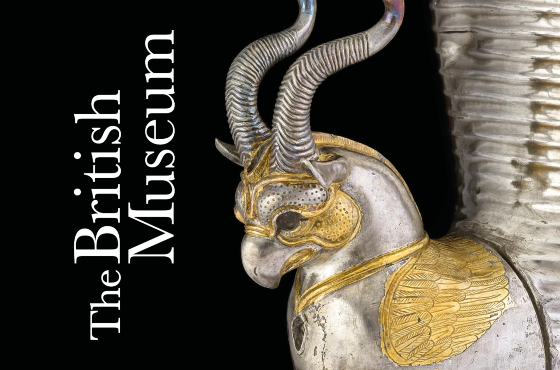Ruling the World But Broke
Imperial Spain's serial defaults...
WHEN the 18-year-old Isabella of Castile married the seventeen-year-old Ferdinand of
Aragon in 1469, they were so
poor that they had to borrow to meet the expenses of their wedding ceremony, writes Nathan Lewis at
New World
Economics in this section
from his forthcoming book, The Magic Formula.
The ceremony was modest;
both the bride and groom,
centerpieces in the factional politics of the time, traveled to Valladolid in secret, and met for the
first time four days before
their wedding.
But things were already looking up for the pair. When she was
younger, Isabella was sometimes
in need even of food and clothing.
The wedding effectively united Spain into a
single entity, making it a
major presence in European affairs. Spain thrived under Ferdinand and Isabella's leadership.
Longstanding civil wars ceased; serfdom
was abolished; bandits were eradicated; roads were improved; the judicial system was reformed, along
with tax administration and many
other government institutions.
The year 1492 proved a double landmark, as
Spain's overseas empire began its
amazing expansion, and also, the last Muslim rulers were driven from Spain for the first time since 711.
Soon after, Spain invaded and
expanded its realm in Muslim North Africa.
Tax revenue of less than 900,000
Reals in 1474 rose to over
26,000,000 Reals in 1504, without the imposition of any new taxes. The gains came from economic
expansion, and improved tax
administration. Isabella died in 1504. Before his death in 1516, Ferdinand considered expanding Spain's
holdings to include all of
North Africa to Egypt, and eventually, Jerusalem and the Holy Lands. But, he instead contented himself
with consolidating Spain with
the invasion and acquisition of Navarre, on the border with France.
More
inheritances formed the empire of
Charles V (1516-1556), the grandson of Ferdinand and Isabella, who ruled Spain in addition to southern
Italy, the Netherlands, Austria
and the Holy Roman Empire – nearly all of Europe between France and Russia. Thus, the Spanish Empire in
Europe was never really a
matter of expansion via the typical mode of military conquest or colonization, so much as a
federalization, in the person of Charles V
himself, of disparate, mostly independently-governed and autonomous existing entities. However, the
later contraction of this empire,
under the pressure of foreign military advance and domestic secession, was real.
Already by the mid-16th
Century, while Spain's overseas empire was expanding dramatically, in Spain itself and in Spain's
European holdings, a process of
economic decay had begun. This strange contrast, between difficulties at home and glittering advances
worldwide, appears to have been
related to Spain's liberal attitude toward the overseas empire, amounting to benign neglect arising from
the sheer difficulty of
effectively managing such a realm in that era.
Kingdoms had been small and
ruled by direct personal
interaction. Charles V was an example of the old type of king that personally led his armies into
battle. In one anecdote from early
in his reign, Charles once asked for a pen and paper, but none could be found in the castle.
Spain's
government asked little of its overseas colonies except for a share of silver mining production, and
even this imposition was
thoroughly evaded. The Spanish eight-Real coin, later known as the silver Dollar, began to be minted in
1497. Later, the enormous flow
of silver from the mines of the New World were minted into these silver Dollars, which became the
premier international currency of
the world, a common coinage throughout the Americas and also throughout Asia, where it became the
regular silver coinage of
China.
The Chinese Yuan, Japanese Yen, Korean Won, Philippine Peso, Hong Kong
Dollar, and US Dollar were all
eventually derived from the Spanish silver Dollar, along with various other Dollars and Pesos throughout
the Americas. The value of
the Spanish silver Dollar was maintained essentially unchanged until it was effectively retired in the
early twentieth century. Thus,
with Low Taxes and Stable Money, the Spanish Empire expanded abroad, even as Spain itself was taxed and
devalued into
oblivion.
At its peak around 1600, after the union with Portugal in 1580, the
overseas Empire spanned the
world, including virtually all of Latin America from Mexico south including California and the
Caribbean; the Philippines, the
Marianas, Micronesia, Guam and Palau; and a network of trading ports along the islands and coastline of
West and East Africa,
southeastern Arabia, India, Malaya, Macau (China), Bali, and Japan.
From the
beginning of his reign, Charles
was faced with constant challenges and was forever short of funds. Wars with France in the 1520s,
Ottoman Turkey in the 1530s, and
revolt in Germany in the 1540s and 1550s, placed a constant strain on finances. Charles borrowed
enormous sums from German and Genoese
bankers, and also went from realm to realm to try to extract more taxes.
At
first, Italy and the Netherlands
bore the brunt of this revenue-collecting, but that resource was soon exhausted. In time, Charles was
refused; these countries
considered themselves independently-governed states. They were willing to fight and pay for their own
defense, but would not fund any
foreign wars. Eventually, Charles turned primarily to Spain, and especially Castile, to raise taxes, and
raise them he
did.
The centerpiece of this tax system was the alcabala, a device that
originated during the Muslim rule of
Spain. It was a 10% tax on the transfer of all real and personal property. However, unlike a modern
retail sales tax or VAT, it
applied to all transactions, and could be imposed many times in the process of a product moving to
market. In effect, it was a tax on
the division of labor itself, and quite destructive of commerce despite its seemingly low
rate.
Also, it
behaved as a tax on all asset transfers. Queen Isabella, in her Last Will, called for the abolition of
the tax. Cardinal Jimenez
pleaded with Charles V to eliminate it. But it also produced the most revenue among the many taxes of
the day, and so it was
kept.
More taxes were added: The cruzada was once an emergency tax levied in
times of war, but it became
payable every three years by all inhabitants. This single tax brought in nearly as much revenue as all
of Spain's overseas empire. The
terces reales was a one-third tax on all church tithes; the subsidio a tax on all clerical rents and
incomes; the excusado a further
tax on church tithes. Additional customs duties (both external and internal) were imposed, along with a
tax on sheep and cattle. The
servicio had been a temporary tax granted during emergency, but it became permanent, and a major revenue
source.
The outcome of this barrage of taxes in Castile was an explosion of tax avoidance, evasion
and resistance. Peasants who
would sometimes murder the tax-gatherers were not afraid of less violent means of avoiding taxes. These
taxes did not produce much
revenue. By the end of the Charles' reign, and after the imposition of many new taxes, the region of
Aragon was paying less in revenue
than it did at the beginning. Many of these taxes were administered by tax farmers – then, as ever,
vicious, corrupt, and hated
everywhere.
The countryside of Spain was depopulated as farmers fled the
taxman, or were driven into
destitution as their animals and goods were confiscated. One avenue of escape was the New World: with
every shipment of silver and
trade goods that came to Spain from overseas, thousands of emigrants left on the outbound ships for
lands free of the hated taxes.
Spain thus exported its best talent, the most ambitious, energetic and adventurous of its
people.
Another
escape was the civil service: government employees were tax-free. Their headcount swelled to enormous
numbers. "There are a thousand
employees," wrote one, "where forty could suffice if they were kept at work."
A
third escape was the
nobility: the nobility were free of many taxes. A fourth alternative was to join the gypsies, living in
the underground economy, and
possibly from outright crime.
Prince Philip told his father in 1545: "the
common people, who have to pay
these servicios, are reduced to such utter misery that many of them walk naked." Merchants and
manufacturers closed their businesses,
and purchased entry into the ranks of the hidalgos, a lower class of the tax-exempt nobility. Their
assets were converted into
government debt. This also gave them access to the court. Now, instead of being a productive taxpayer,
they could engage in directing
some of the flow of taxes paid by others out of the government and towards their own
pockets.
Within the
court, a continuous battle waged for the patronage and favors of the king, and with it all manner of
monetary rewards. The more
intensely the taxes fell upon the lower classes, the more intensely the nobles and wealthy sought ways
to avoid being taxed. Attempts
were made to introduce tax systems that fell upon all classes proportionally, but the terror of being
subject to taxes was so great
that these were all refused. After all these efforts, Charles gained about a 50% increase in nominal
annual tax revenue over the 37
years of his reign; but, along with the inflow of silver from the New World, agricultural prices also
increased by 100% during that
time. By 1543, 65% of tax revenue was used to pay interest on the debt. An attempt was made to pay down
some of the debt, but the
bondholders complained that there was no other investment that would turn a profit.
During this time, the
overseas empire was experiencing incredible success. The empires of the Aztecs and Incas fell with
astonishing rapidity in the 1520s
and 1530s. In the following decades, the Spanish adventurers consolidated their rule throughout the
Americas, subduing and often
enslaving millions of natives.
In 1522, Ferdinand Magellan's fleet accomplished
a circumnavigation of the
world. In following decades, Spanish and Portuguese traders traveled throughout Asia, transporting
silver and luxury goods between
Europe and India, Siam, the "spice islands" of the Moluccas, China, the Philippines and
Japan.
In the 1570s,
they established a trading route across the Pacific between China and Spain's colonies in Mexico and
South America. Spanish galleons
carried silver from mines in Bolivia and Mexico to China, and carried all manner of silks, porcelain,
spices and other manufactured
goods back to Europe. Before long, Chinese manufacturers were making goods according to European
specifications, including clothing in
the latest continental fashions. The Spanish government attempted to charge tariffs on this trade, but
they were almost universally
evaded.
Charles' son Philip II became king in 1556, and had the unfortunate
duty of defaulting on the
enormous debts his father had amassed. He defaulted in 1557, 1560, 1575 and 1596.
In 1566, a revolt broke out
in the Netherlands, then under Spanish rule. Twenty thousand troops were sent under the command of the
Duke of Alba to suppress the
revolt. The Netherlands had been somewhat autonomous from Spain, and taxes were based on long-standing
Dutch norms.
To pay for the expense of the troops, Alba imposed a variety of new taxes including the
hated alcabala in the
Netherlands. Whatever their previous grievances (mostly centered on the Protestantism sweeping Europe at
the time), the Dutch now had
a new reason to fight. The revolt turned into a disastrous civil war that lasted eighty years, with
catastrophic consequences for
Spanish finances.
The independent Dutch Republic was established in 1581,
although battles with Spain
continued until 1648. The Netherlands had always been a center for trade, but independence freed the
Netherlands from Spanish taxation
and created a new competitor for Spain's overseas trade empire. Many of the new Dutch traders were
simply the merchants of Spain with
a new flag. As the Spanish coinage was later debased, during the seventeenth century, the Netherlands
maintained a scrupulous policy
of monetary stability. The Netherlands became the wealthiest nation of the seventeenth century, and the
finance capital of Europe,
before it too succumbed to overtaxation in the eighteenth century and was eclipsed by
Britain.
Philip II's
empire was harried by both the Dutch and the English, who interfered with shipping especially along the
North Atlantic coast. In 1588,
Philip decided that he would invade England, and sent off an Armada of 130 ships to accomplish that
goal. The Armada was defeated,
mostly by terrible weather rather than the over-matched English navy. But, England showed that it would
fight with all of its
resources; and certainly one reason for this was that they would rather be ruled by Elizabeth I than
fall under the oppression that
Philip II imposed upon his own people.
The costs of the Armada and Philip's
other imperial ambitions were
enormous, and funded by more debt and more taxes. The milliones and sisas piled heavy new excise taxes
upon the existing tax
structure.







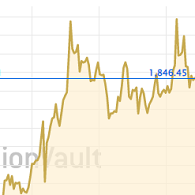
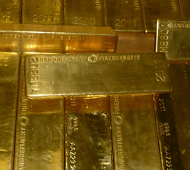

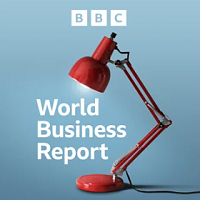
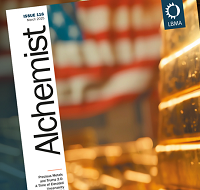
 Email
us
Email
us